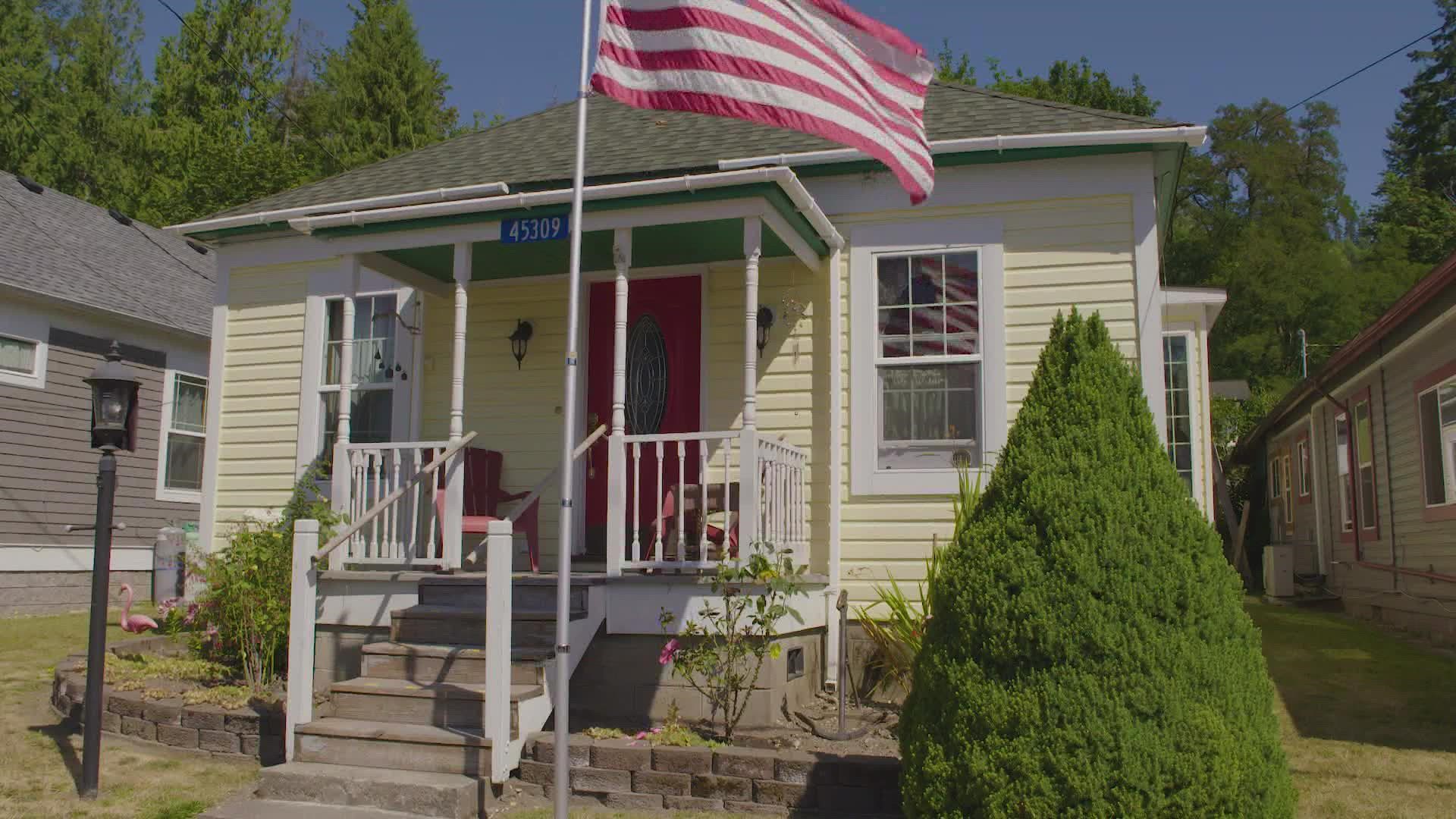CONCRETE, Wash. — Larry Tusten was back at work, and on better financial footing, after several pandemic-related shutdowns at the meat processing plant where he works in Skagit County.
He was eager to get caught up on his monthly house payments, which were delayed through a federal program called ‘mortgage forbearance,’ which paused mortgage payments for borrowers.
It’s a plan that nearly 7 million Americans signed up for at some point during the pandemic.
Tusten resumed with double-payments – sending money twice a month instead of once – to his loan-servicer, US Bank.
Then, a troubling notice arrived in the mail. US Bank told him his new monthly payment would be three times the $759 amount he was paying before the forbearance.
“It didn’t make sense, it’s way more than I can afford,” said Tusten of the monthly payment of $2,237 that US Bank requested.
The notice listed it as a “…Voluntary Monthly Payment Amount,” with a due date in July. Tusten said he could not get anyone from US Bank on the phone to alter the payment plan. He was concerned that he might default on this home loan and face foreclosure, so he hired Washington foreclosure lawyer Nadia Kourehdar to resolve the dispute with US Bank.
“Banks are always going to try to make the most money possible in the fastest amount of time, even if it means not complying with the guidelines that the government has said the banks have to do,” Kourehdar said.
Kourehdar said she’s heard from several clients exiting forbearance whose loan servicers are suggesting bigger repayment plans than they can afford.
“Larry is not alone,” Kourehdar said.
Home loans backed by the federal government – Fannie Mae, Freddie Mac, FHA – all have guidelines about options that are supposed to be offered to borrowers at the end of a forbearance period. But Kourehdar said the banks that service those loans on behalf of the government agencies are eager to make additional fees by collecting the money faster. They may not make borrowers fully aware of all the repayment options.
“I have personally had many more clients than Larry at this point and they’re ranging all over from different banks,” Kourehdar said.
She was able to negotiate with US Bank to get Larry closer to the $759 monthly payment that he was used to, an option that should have been available to Larry from the beginning.
In Larry’s case, the arrears from six months of non-payment were added to the end of the loan. In effect, he has a six month longer loan with a manageable $759 payment.
The federal Consumer Finance Protection Bureau (CFPB) says that the millions of Americans who paused their mortgage payments for six, 12 or 18 months will all have to re-start payments by this fall. Many, like Larry Tusten, already have. They’re finding that the forbearance program, which only required a written letter stating hardship to get in, is a little more complex to exit.
“There should be more than just one or two options (from your loan servicer)," said CFPB Assistant Director for Mortgage Markets Mark McArdle.
“You have to talk to your servicer,” said McArdle, which is something that many did not have to do to start the forbearance process.
McArdle said the federally-backed loans – of which 80% of home loans are – are required to offer deferrals in which loan servicers move missed payments to the end of the loan and extend the life of the loan. He said some borrowers may choose a “reinstatement” of their loan, which is when you make higher payments for a period to make up for missed payments
If your loan servicer isn’t giving you options, you can file a complaint with the CFPB.
CFPB recommends getting help from a HUD housing counselor if you need help navigating the system.
McArdle said its important to work with your loan servicer and keep your mortgage current because the federal ban on foreclosures has expired so banks can start proceedings against borrowers who are in default.
US Bank sent the following statement in response to KING 5’s questions about Larry Tusten’s case:
"For more than a year U.S. Bank has been committed to working with customers experiencing hardship due to COVID-19 to connect individuals with the option that best meets their needs, this may be a forbearance and/or deferring the forbeared payments or modifying the loan if the customer needs payment relief. At the conclusion of a forbearance agreement, the Bank reviews customers for all available post forbearance options, tailored to their individual financial situation. However, there may be instances where the resolution the customer is aligned to may not meet their situation at that time. In those cases, customers are encouraged to reach out to discuss their situation. The best solution will depend on each individual’s financial situation, and the Banks top priority is to keep customers in their home with affordable monthly payments."
“To lose the house would be everything for me,” Tusten said.
Larry is now on track to pay the remaining $20,000 on his home loan and then retire in his home in Concrete.

